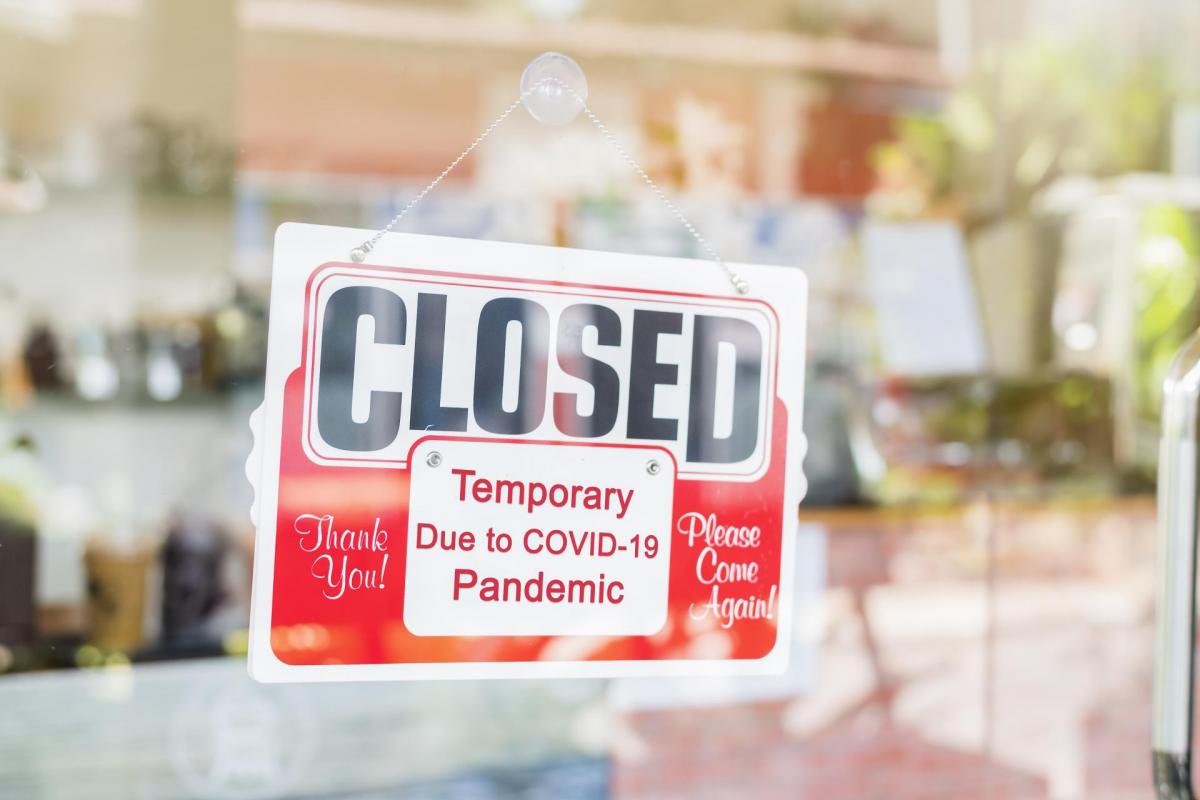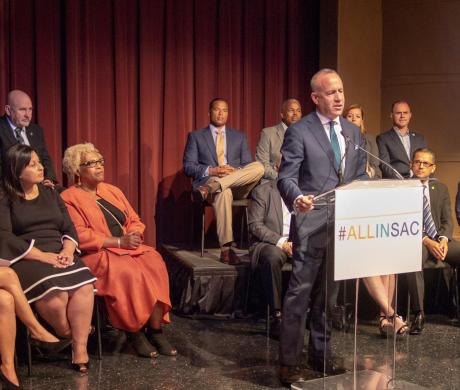Adding to the challenge – the increasingly volatile sales tax
The coronavirus recession has eroded city budgets in many ways. In 2020, the pandemic left many tax revenue streams damaged and the impacts will continue to cut deep in the fiscal year ahead for many cities. What has mattered most to city budgets in this pandemic is how a city generates money, and those highly dependent on tourism or on volatile sales taxes have been, and will be, most impacted. As local governments grapple with the revenue loss and spending increases associated with the pandemic, it’s important to review the trends and forecasts of the revenue streams upon which a city most heavily relies and adjust accordingly.
Lloyd de Llamas is co-founder of HdL Companies, which provides a variety of revenue and economic-related services to cities and counties; he can be reached at ldellamas@hdlcompanies.com.
2020 second quarter tax receipts dive worst since 2009
Local tax receipts from second quarter 2020 sales exhibited the greatest quarter-to-quarter decrease since 2009, with some agencies down more than 50 percent from the year before. Current third-quarter receipts exhibited some recovery primarily in California’s inland and far north regions. However, the gains were largely from countywide pool revenues where taxes on goods shipped from out of state are allocated. Those boosts are a result of pandemic-driven consumer shifts to shopping over the internet, coupled with new revenues from last year’s implementation of the South Dakota v. Wayfair, Inc. decision that now requires out-of-state retailers to collect and remit local taxes. The pool gains were not enough to overcome declines in the denser, visitor-oriented coastal regions which continued to decline.
With a full year of the Wayfair implementation in place, pool revenues are expected to begin leveling off in future quarters. Without that extra boost and the surge of new COVID-19 infections following Thanksgiving and Christmas holidays, cities may experience further declines in their fourth quarter 2020 and first quarter 2021 sales and use tax revenues.
Income-wise, the greatest impact was on low-wage workers and small businesses that account for a smaller portion of overall sales tax generation. Internet-connected knowledge workers continued to work but locked at home, found that they had extra cash to spend because of reduced commute and work-related expenses and few available travel or entertainment options. With low interest rates, extra money was spent on previously delayed purchases such as autos, home improvement, hobby and sporting goods, home furnishings, and consumer electronics. Grocers, liquor stores, and cannabis retailers also did well. Jurisdictions with the right mix of retail to accommodate those demands generally did better than those without. A very few select agencies hosting online retailers, who inventory their merchandise in California, experienced gains as high as 150 percent.
Recovery forecast to begin in 2021 second quarter
Assuming a successful mass-vaccine program, HdL’s current forecast is for recovery beginning in the second quarter of 2021, with full recovery dependent on the specific character and makeup of each jurisdiction’s tax base. Part of the recovery will be a shift back to non-taxable services and activities that were limited because of pandemic restrictions and which consumers temporarily replaced with more spending on taxable goods. Various surveys also suggest businesses have found that much of their previous work that involved business travel can be done just as well online, and related revenues from hotels and restaurants may not fully recover until 2024. Revenues from leisure travel activities are expected to recover sooner.
Full recovery may also look different than before the pandemic. HdL’s database indicates that 56 percent of third quarter purchases of general consumer goods were done over the internet, while surveys are finding that half of the responding consumers who discovered new online alternatives during the pandemic expect to continue those habits going forward. This suggests that at least part of the tax shift from brick-and-mortar stores to countywide pools and in-state fulfillment centers will become permanent.
Pandemic accelerates shifts in consumer habits
The pandemic has accelerated shifts in consumer habits that were already taking place and like most changes, presents both challenges and new opportunities. “Touch and feel” shopping is not going away, but retailers see an evolution where store shopping is more leisure- recreational-oriented with smaller stores offering more showrooms and delivery and pickup services. Bad news for cities with malls, but the smaller footprints and lifestyle emphasis also offer opportunities to reinstate downtowns and neighborhood centers as economic and social gathering places.
For agencies without adequate market populations to support high-volume retailers, the growing trend of manufacturers and entrepreneurs with new concepts to bypass stores and sell directly to the consumer through online order desks provides opportunities to generate sales tax through industrial development. Additionally, the pandemic’s disruption of supply chains has accelerated growing dissatisfaction with overseas arrangements and some reshoring will occur that offers opportunities to leverage a city’s existing business base to attract compatible industries.
Chasing volatile sales tax v. more stable economic drivers
In the long run, having to constantly change economic strategies to capture the ever-evolving ways that sales tax is generated versus a consistent focus on job development, housing, and commercial amenities most appropriate for the community could be a losing proposition.
As major e-commerce retailers move more of their inventories to in-state distribution centers, the pools will shrink and the consolidation of huge amounts of sales tax into a single point of sale will become more prevalent. The competition to reduce the total amounts of tax revenues available for public services by bidding kickbacks to attract those single points of sale will become more intense. Some of these points are now so large, that an agency could conceivably rebate 100 percent of the revenue and generate its new income by taking a larger share of county-pool revenues, which are distributed as a ratio of each jurisdiction’s contribution to total county sales revenues.
Previous proposals to convert to destination sourcing to serve the jurisdiction of the buyer that pays the tax rather than the seller, have failed because of the lack of agreement on how to make the shift without harming the agencies that currently benefit and have built their service levels from the existing system.
One solution might be to create a special tax on large scale distribution operations to reimburse hosting agencies for the extra services and road wear. Another might be to revisit previous reform proposals and consider exchanging part, or all, of the Bradley-Burns one-cent sales and use tax for property tax while leaving the option of also levying a destination-sourced transactions tax for whatever amounts that local voters approve.




